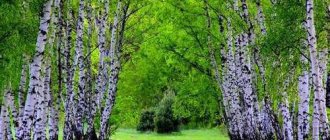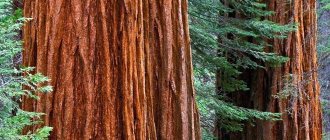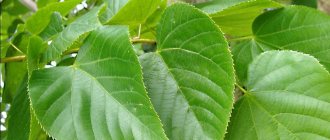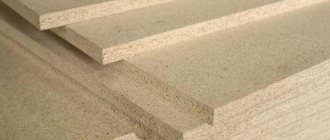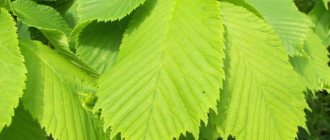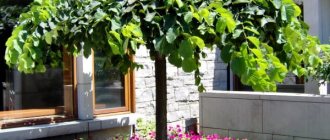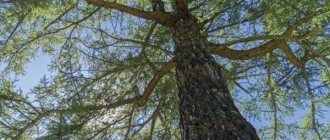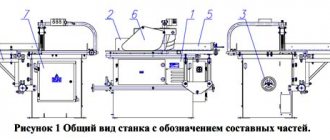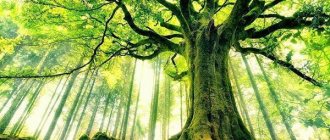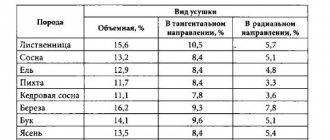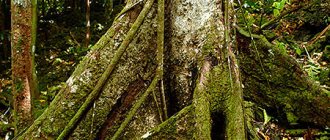MERBAU (Intsia bijuga and Intsia palembanica) is a tall deciduous tree that grows in Indonesia, on the island of New Guinea, the Moluccas.
| Merbau habitat |
The trees reach a height of 50 m and a diameter of 150 cm. The trunks are cleared to a height of 18 m above a large zone of plank roots, but are not always straight.
- Merbau tree
- Merbau tree
- Merbau tree
- Merbau tree
Description of trees
The source of merbau is deciduous trees from the genus Intsia, which belongs to the Legume family. They grow in the coastal areas of Thailand, Indonesia, Malaysia, New Guinea, Solomon Islands, and Fiji. They mainly use two breeds that are similar in appearance. These are real giants with a height of 30 to 50 m . The trunks are up to 1.5 m wide; most of them have no side branches. They reach maturity quickly and plantations are renewed every 25 years. In their natural environment, breeds develop better.
Names of material used by Aboriginal people:
- quila,
- lumfo,
- ipil,
- tat-talun.
The Intsia root system helps improve the mineral composition of the soil, prevents and slows down erosion processes. Trees grow well on any type of soil: from rocky, loose, sandy to heavy loamy. The wide, shady crowns have a picturesque appearance; the leaves emit phytoncides and help purify the air. Plants are suitable for landscaping parks and strengthening sloping banks .
Description and technical characteristics of the material
Sawn logs emit a characteristic astringent aroma of essential oils, do not have ideal circles on the cut, areas without curvatures, grooves, or other short defects. The sapwood of the material is narrow, yellow in color, clearly demarcated from the heartwood. For logs with a diameter of 100 cm, it is 5–7 cm. The core is golden-orange, pink or light brown, with contrasting yellow or grayish inclusions of mineral compounds: gum, sulfur. As it dries, the surface of the kernel darkens and acquires a bronze or brownish-red hue.
Drying is carried out in logs or sawn form at a temperature of 42–48 ° C. The material reaches the required 15% humidity slowly, at least 2 months, but practically does not warp or decrease in volume. Tangential shrinkage is 4.6%, radial - 2.7%, volumetric - no more than 8%. There is a slight risk of hairline cracks during the drying process.
The density of the dried material varies from 640 to 960 kg/m3. This tree is heavier and harder than oak and teak. The tensile strength in bending is 115 MPa, in compression across the fibers - 58.2 MPa, along - 9.17 MPa. Hardness on the Janka scale ranges from 1500 to 2000 units, on Monique - 8.8. The saturation of cells with moisture during complete immersion is no more than 24%.
The finished material has a uniform, somewhat rough texture with a beautiful combination of sections of straight, wavy, wavy-curly fibers in the form of twists, ribbons, weaves, and loops. After several years of use, the array becomes more matte and acquires a silvery tint.
Secrets of choice
A light floor will contribute to the visual reflection of color, so that even a dark room will not look gloomy.
A calm and orderly space can be created by combining light floors and cool wall colors. However, do not overdo it with coolness - this especially applies to western and northern rooms, where the amount of natural light is small.
Dark furniture goes best with light floors. But dark floors are ideal for creating contrasts in a room. They will look harmonious in a room with dark color accents or with walls painted in light colors.
But you shouldn’t combine such a floor with sharp white - the light shade should be pastel, mixed from halftones. Remember that the abundance of dark shades will negatively affect the perception of the room, making it small and gloomy.
By the way, Merbau brand laminate can have both dark and light colors. However, in this case, the color will necessarily have a red tint.
Kinds
Intsia palembanica and Intsia bijuga are the main species producing valuable lumber. Both species grow together, differing only in the shape of the leaves. The technical characteristics of wood are almost the same. The material grown on plantations and in virgin forests also does not differ.
Sometimes Doussia (Afzelia) wood is classified as a variety of merbau. This is an African or Madagascar breed that is light red or bright brown in color. It is characterized by high hardness.
Merbau parquet: application options
Merbau parquet is incredibly popular in European countries. This coating is used for decorating rooms with high levels of humidity (baths, home pools, saunas), as well as for areas on terraces (both open and closed). Due to its high hardness, parquet is also used for finishing public and administrative buildings, where, by default, special strength of the floor covering is required.
Solid merbau parquet board
Video review of merbau parquet from the channel “ Alliance of Parquet Manufacturers ”:
The natural brown-reddish shades of Merbau parquet darken over time, but this only gives the flooring sophistication and nobility.
Author: F.S. Volgin
Areas of application
The natives of the countries of Oceania used thick Intsia logs to make war canoes and build houses. On the island of Fiji, they were used to hew supports for temples, carve sacred gongs and ritual bowls.
In Europe, merbau was used to construct sleepers, supports for bridges, and dams . In modern industry, this type of wood is used as a raw material for the production of solid boards and sliced veneer. It is used to produce various types of flooring, doors, window profiles, stairs, balustrades, finishing panels for premises, yachts, and top-class land transport.
Cases, parts of stringed musical instruments, fragments of artistic inlay, handles, wooden decorations in ethnic style, figurines, figurines are turned from merbau, and expensive furniture is produced.
This material is loved by cabinetmakers for its original design and rich shades.
Merbau wood oil is used to produce ink, insecticides, and in folk medicine. Preparations for the treatment of joint inflammation are made from it. The crushed bark and green part of the shoots are used as an analgesic, anti-fever and bactericidal agent.
Story
There are a huge number of trees growing in the tropics, but not all have such valuable characteristics as the merbau tree. Several centuries ago, the aborigines used it to make canoes, which were passed down from generation to generation. Currently, in New Guinea there are preserved examples of boats that are more than four hundred years old. As well as canes, axes and spears, bowls, and various decorative ornaments.
These peoples have the expression “strong as a merbau,” which speaks of the best qualities and strengths of a person. During various rituals performed by the aborigines, bowls made from this tree are used as sacred vessels.
Advantages
Merbau is used where resistance to high loads, strength, and resistance to moisture are required. The material is suitable for external use, as it withstands temperature changes well, is insensitive to sunlight, winds, does not swell, does not crack. Wear resistance and stability make merbau parquet suitable for auditoriums, clubs, and dance halls.
The array has high biological stability, is practically not affected by fungus, termites, and other wood borers, does not rot, and does not require additional treatment with antiseptics. A long stay in water bodies or direct contact with wet soil can be detrimental to the material.
Merbau does not crumble during processing and holds fasteners in the form of staples or screws. Due to the high hardness of wood, difficulties arise when driving nails.
The solid wood is easily etched with any tinting compounds, holds varnishes and paints, can be glued and polished. Resistant to mechanical damage, durable, does not require restoration for decades.
Finished goods
The main known uses, they should be taken in light of established practice. Important note: Some uses are mentioned for information (traditional, regional and antique items).
- Everyday furniture and its components
- Floors, parquet
- Internal cladding panels
- Outdoor joinery
- Facade board / planken
- Terrace board
- Indoor carpentry
- Industrial and other heavy-duty floors
- Massive carpentry structures
- Sliced veneer
- Upscale mahogany furniture
- Pillars
- Turning products
- Wooden utensils
- Tool handles
- Hydraulic works (fresh water)
- Bridges (parts in contact with water or ground)
- Bridges (parts not in contact with water or ground)
- Stairs (internal)
- Musical instruments
- Sleepers
- Floors in vehicles and containers
- Cooperation
- Shipbuilding (boats and decks)
- Boxes and containers
Flaws
Merbau wood is saturated with natural oils; dry material emits a lot of dust during processing. Vapors of essential oils and tiny solid particles penetrate the respiratory tract and settle on the mucous membrane, provoking allergic reactions and severe coughing. When working with merbau, it is necessary to use protective equipment.
The presence of pockets with reserves of mineral deposits in the thickness of the array provides high strength, but reduces the elasticity of wood fibers. Merbau is very difficult to grind, saw, cut, and quickly dulls the working surfaces of tools . Under strong impact loads, the wood may split. Only tungsten blades do not fail for a long time. If sawing is done incorrectly, the edges of the cut fibers often become bulged.
Another disadvantage of wood is the darkening of the surface at the points of contact with metal fittings. A light array inevitably changes shade as a result of long-term use in bright lighting. To avoid the appearance of a grayish tint, it is necessary to tint the surface.
Import and cost
Most of the raw materials come from New Guinea and Indonesia. Often the material is not certified. Illegally cut down timber is first exported to China or Japan. From there it is distributed by large trading companies. This threatens the existence of Intsia's natural habitats, but the timber resource is regularly renewed through plantations.
The cost of 1 m3, from which 25 m2 of parquet can be made, is 120–140 dollars, the retail price of the material to the consumer costs from 2000 dollars and more.
In Russia, the cost of merbau parquet varies from 2,500 to 4,000 rubles. for 1 m2, solid boards - from 5500 to 6000 rubles. for 1 m2.
Economical alternatives to merbau
There are economical and no less beautiful solutions for lovers of exotic parquet. Dark oak parquet can easily replace merbau. If properly finished, such parquet will look no worse than merbau. In addition, dark oak is a less problematic wood than merbau, and also costs 3 times less.
Another adequate solution could be laying parquet from standard light oak and then tinting it in merbau color. The advantage of this option is that you can, if you wish, change the color of the parquet to any desired color - today you will have parquet tinted to look like merbau, and in a year you can change its color to wenge, and another year to sucupira. This is an ideal option for those who like to change their interior.
